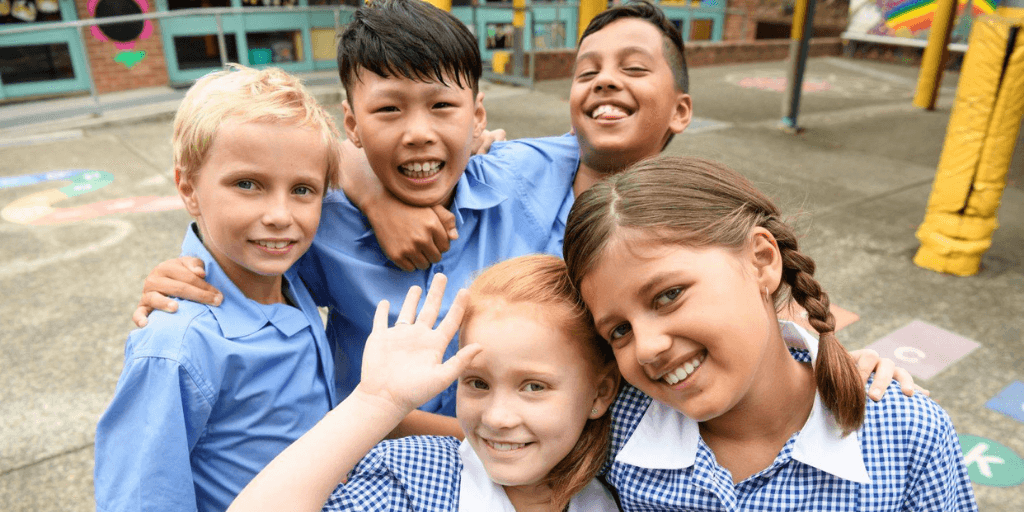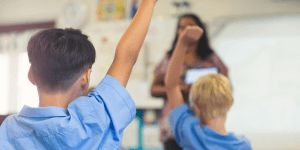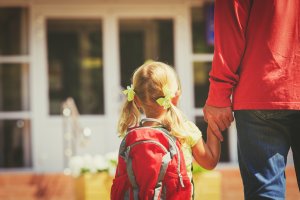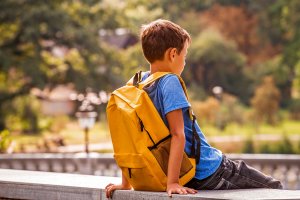
The Challenge of Change in Returning to School in a COVID-19 World
This ‘The Challenge of Change in Returning to School in a COVID-19 World’ blog article was written by Marina Dickson, Organisational Lead of Course and Content Development, at the Australian Childhood Foundation.
In May of last year, our Australian Childhood Foundation colleague Lauren Thomas wrote a blog called ‘Back to school in a COVID-19 world’. Here we are heading toward the end of 2021 and it seems timely to review and update this blog given the circumstances across multiple states in Australia who are, once again, taking steps out of lockdown and supporting children and young people to return to classrooms and face to face learning environments at school.
This blog explores some of the challenges of transitions and change for children, and families, as well as some of the ways that we as professionals can support these transitions in a way that enables a sense of safety for children with whom we work. We acknowledge that much of the content of this blog focuses on children rather than young people but you may find it has relevance to your work, regardless of the age of the children and young people with whom you work.
Thinking about transitions and change
We know as adults that change can be truly challenging and this is very much evident in our current world. Dealing with those transitions from one situation to another can leave us feeling wobbly and struggling to find a solid platform to manage the latest change. We are often experiencing a mix of feelings that, even when the change is something we want, always includes a sense of loss and anxiety at what is to come.
Transitions are tricky for us all but can be scary for children and terrifying for children who have experienced trauma. We know that for all children, and particularly those who have experienced constant uncertainty, challenge or trauma, any change at all can feel threatening. Anything that is unpredictable, new or surprising (including happy surprises) can tip a child’s physiology into defensive mode – which is preparing the to fight, run away from, freeze or collapse to deal with this invisible ‘predator’.

What we want as we make the move back together is for all children to be able to play, learn and enjoy being with other children and adults. But, as Porges’ Polyvagal Theory tells us, we can only play, learn and have fun with others when our nervous system detects that all is safe. Our job when working with children is largely to help them to feel safe but how can we do that when our parameters of safe are likely to have changed during these unprecedented times.
This is a time of mixed emotions for us all and that certainly includes our children. The return to school, or early childhood education, can see them dealing with a range of reactions. They may be excited to be returning, or dreading it; they may be really happy to see their friends, or worrying about whether their friends will still talk to them; they may be nervous about the virus still, including holding worries about whether they are vaccinated or unvaccinated because they have heard the adults in their world discussing it so much. They may wonder if their teacher is still there, if their classroom will be the same, if the playground still has that safe place they go to when they are feeling a bit scared – and a whole range of other things that may not even be conscious to them. All of these feelings, thoughts and responses will show in their behaviour and we can work to try to understand and respond as supportively as we can to those presentations – even when we might be feeling the same maelstrom of reactions!
Predictability as safety
The notion of predictability as safety can be a very helpful one at this time. It asks us to think about what we can do to ensure a child’s day is predictable enough for them to be able to play, learn and connect. How might we be able to do that, particularly if we work in schools or early education environments?
Environmental predictability might be the first step. This focuses on helping children understand what the environment will be like on their return. Can we provide children with photos of what the room will look like when they return to it before they make that transition? Can we also take them on a virtual tour of the school or service to remind them where things are before they come back in?

Relational predictability might be next. Who will be there to greet each child on their return? Where will that first greeting take place ie: can we ensure there are special people at each gate and that the staggered arrival provides an opportunity to adjust to this ‘new old’ place with a sense of connection and without too many people in the crowd? How will each child be greeted – has there been a special greeting that has been used each morning during home schooling and can that be replicated on arrival into the school or service? And can it then be replicated on arrival into the building and/or into the room?
We can then think more about the comings and goings at the start and end of each day – but particularly that first day. Is there a sensory predictability that we can use? Examples of this might include having a consistent piece of music playing in the room, a textured item that each child is passed as they enter the room (that ‘belongs’ to them), a series of images that may be projected onto a wall during that entry time (which might perhaps be landscapes or patterns) or a pleasant smell that is diffused in the room that can be tolerated by all of the children.
And then there is routine as predictability. One educator made the lovely point that we can talk about routines as rituals as this has a more positive connotation. What are our rituals during each session and each day? We also need to be clear that routines do not equal rigidity. We can build an appropriate level of flexibility into the day’s routine – such as giving a choice for children between two activities to start the day or the session. However, we know that children will look for consistency and repetition in their experience of each day at this challenging time because so much of their lives have been turned upside down over this period. They are looking for what is still the same, what they can expect from the world around them, and the adults within it to help them to feel safe every day.
And while we have focused a lot on how to enter the day, we also need to pay attention to the transition at the end of the day – with the same principles of predictability applying.
You will note that all these layers of safety are predicated on one critical aspect and that is the relationships that we as professionals hold with the children with whom we work. We know that at this time of significant transition and change the relationships that we hold with children are going to be crucial to the child’s experience of safety and capacity to navigate the inevitable changes that each day will bring.
Behaviours we might see and ideas for responding
We always hold in mind that behaviour is a story and is trying to tell us something about how the child is feeling and responding to the situation. It is helpful for us to continually ask, ‘What is the meaning behind this behaviour?’ Continually considering our answers to this question for each child with whom we work enables us to respond to the underlying need rather than the presenting challenge as has been explored already in the above content.
Some possible presenting behaviours and underlying needs are included below along with some ideas for responding. This list is by no means exhaustive but provides a starting point for your consideration. What might you add in terms of the children and young people with whom you are working?
Complaints of sickness
Possible underlying need(s): To address anxiety, worry or concern.

Ideas for responding: Find labels for the child’s feelings eg: colours, animals, music or words. Giving time for rest throughout the day, and evening.
Difficulty with managing drop off, this may also be replicated with difficulty managing pick up
Possible underlying need(s): To feel safe and less overwhelmed, to feel that parent will be OK, to feel connected.
Ideas for responding: Role play school drop off (as might have been done prior to commencing school initially), identify the welcome person and process, carry a safe object from home (or from school) for the transition. It can be something small that fits in a pocket, but represents the connection you have.
Struggling to remember instructions and/or concepts and tasks
Possible underlying need(s): To feel calm.
Ideas for responding: Support experiencing calm before asking the child to remember something, such as an instruction or task. Examples may be breathing exercises, mindfulness or yoga. Providing directions or instructions that are short and simple – and acknowledging they may need to be repeated. Ensuring own state, and subsequently our tone of voice, is calm and warm to ensure the child feels safe in the connection, and more able to take on board what is being said rather than having to focus on how it is being said. Doing review activities that support the child to go over the day and project their learning into the next day, as well as starting each day with a review of the previous day.
Emotional outbursts
Possible underlying need(s): To feel supported at a time of feeling overwhelmed.
Ideas for responding: Finding labels for the child’s feelings and helping them to find labels that work. Then spending time on how to ‘shrink’ the feeling. If it is music – how do we turn it down? If it is a colour – how can we make it fade? If it is an animal – how can we make the animal shrink? Provide spaces the children can access that have calming sensory opportunities within them eg: boxes to sit in, blankets to put over them, pillows to snuggle in (while acknowledging that it may be that each child has their one thing in the space to keep it COVID-safe). However, these spaces should enable the child to still be able to see the adult to ensure they still feel connected.
And a final word about ourselves
We know that as professionals, our focus is invariably on the children, young people, families and communities that we support. However, we cannot be a supportive and responsive relational resource during this time of change if we don’t take care of ourselves. These have been challenging times for all of us and it is reasonable that we feel a bit wobbly too as we make this transition – again. Please know that self-care is not some fluffy, feel-good after thought but an essential component of being able to effectively support children and young people. Please find the strategies that you need to look after yourself through this most challenging of times and remember the fundamentally important role you play in enabling children and young people to manage the changes and transitions of this extraordinary point in time.
